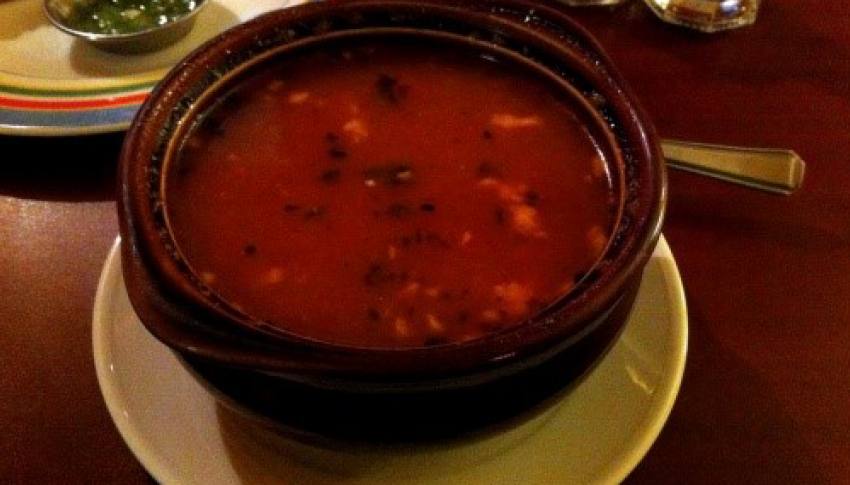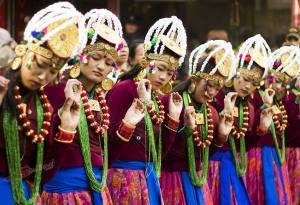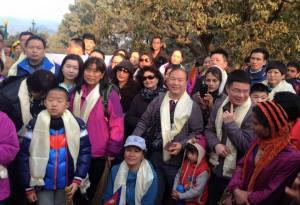Gundruk Soup
Gundruk is a fermented form of broad mustard leaves, yellow mustard, radish, or cauliflower leaves. It can also be cooked with/without potato or soybean. Leaves are sun-dried, washed, and fermented in an earthen jar for about a week. It is taken out of the jar and sun-dried again until it turns crispy and ready for longer period storage. It is considered a classic Nepali preparation, cooked and popular in all strata of people, both in urban and rural cooking. The tradition of preserving green leaves primarily must have been viewed to save excess green for rainy days. It is served with Dhido (corn meal) or rice. In some places, sliced yellow pumpkin is added during the fermentation process so that the soup becomes more tasty and nourishing. Fermentation and sun-drying of greens enhance the nutritious value of vitamin C and D without destroying the original health benefits. It also adds digestive properties and enhances appetite. It is commonly cooked in soupy form and called Gundruk ko jhol. It can also be used to make achar (pickle) by soaking it in water, pounding it to make it soft and mixed with salt, green chili, garlic, and uncooked mustard oil. There is also the practice of preparing it in the form of powdered Chatani or cooking with tomato as an achar with a different taste.
Ingredients
- Gundruk: 1 cup
- Potato: 1-2
- Soybean: ½ cup
- Garlic: green or dry
- Salt: to taste
- Turmeric: a pinch
- Green chilli: 1-2
Process
- Fry Gundruk and set aside.
- Fry soybean in oil and add potato.
- Add water, salt, and turmeric and cook for 5 minutes.
- Add more water and let it boil for 2 minutes.
- Add green or dry garlic and green chilli.
- Serve hot with rice/dhido.





